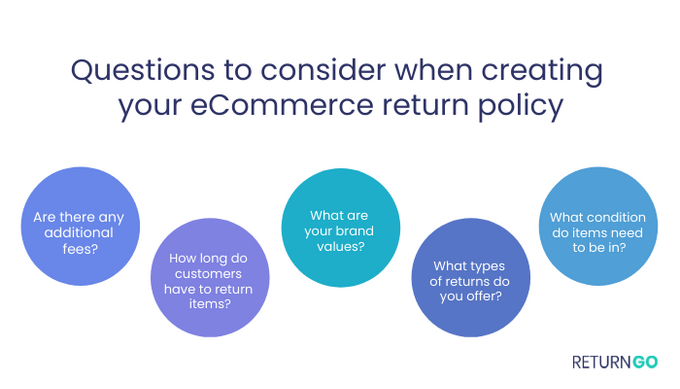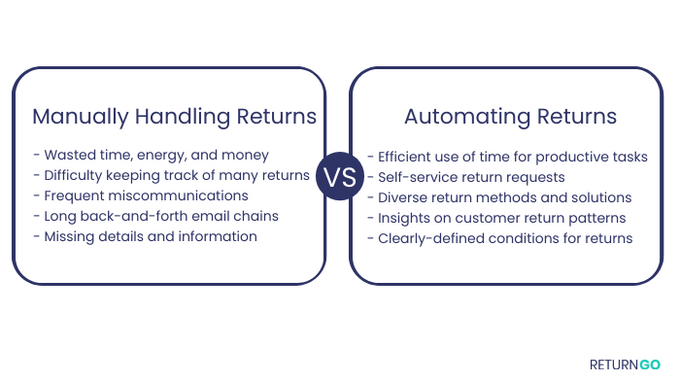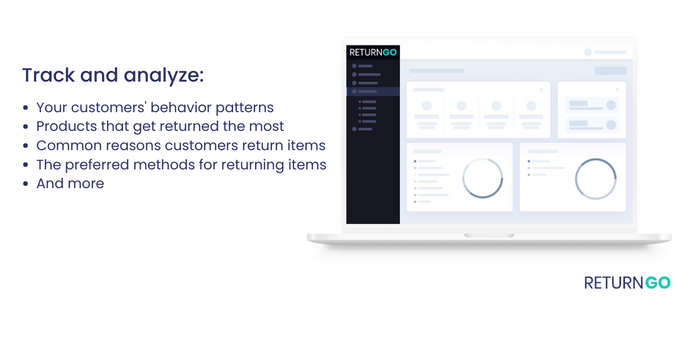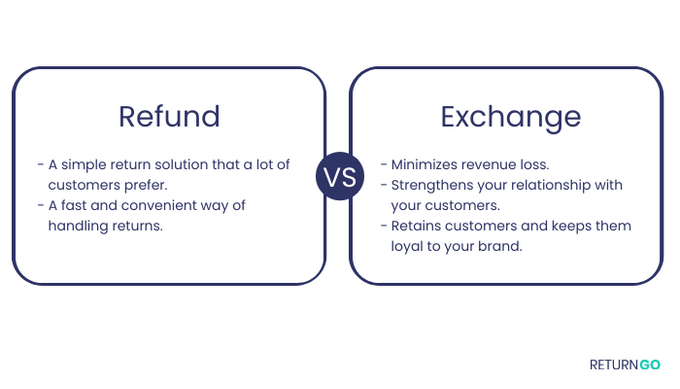5 Strategies to Reduce Your eCommerce Return Rates
Updated April 28, 2023

A strategic approach to reducing returns is crucial to eCommerce success.
The average return rate for eCommerce has doubled in the last few years, bringing it up to 20.8%, and many eCommerce merchants are left scratching their heads about how to cope with this new situation.
Consider how you can simplify the return process and learn from it to prevent returns before they happen.
What is a Return Rate?
Return rate refers to the frequency that your customers return products at your eCommerce store. Return rates are represented as a percentage of the total number of products sold within a specified timeframe.
To calculate your product return rate, divide the number of returned items by the total number of items sold and multiply by 100.
For example, if you sell 10,000 products in a year, and 2,000 of them were returned, your eCommerce return rate would be 20%.
Why Reducing Your Return Rate is Important
A high return rate can have a big impact on your profit margins, and can often signal the end of customer relationships.
While it’s inevitable that every company (no matter the size) will have to deal with a certain amount of returns, there’s a lot you can do to optimize your customer experience to reduce the chance of customers wanting to send products back.
5 Ways to Reduce Your Returns
If your eCommerce business doesn’t already have an effective strategy in place for handling returns, now’s the time to take action.
Here are a few hand-picked strategies you can use to reduce your return rates.
- Optimize Your Product Descriptions The best way to make sure that your products meet your customers’ expectations is to provide them with as much detail as possible.
- Make sure each product has a clear headline, a paragraph with details of what makes the product unique, a bulleted list of product specifications and features, and user-generated content like reviews and images.
- Include high-quality product photos from different angles, and consider incorporating product videos for an even more detailed look at the products.
- Provide detailed sizing charts with all the measurements your customers need to know or offer a sizing guide based on the sizes they wear in other brands.
- Create a Clearly-Defined Return Policy Your return policy is a key tool for reducing returns by clearly setting expectations.
- Automate Your Returns Process Customers want to support businesses that make their lives easier. When your customers have confidence in your returns process, they won’t hesitate to purchase from you again. 92% of customers say they will buy again if the returns process is easy.
- Analyze Your Customers’ Return Patterns Just like you can track which products sell most, you can also track which products are most frequently returned and why.
- Encourage Exchanges Over Refunds
Customers can’t touch or feel online products, so your product descriptions matter. Make sure your customers know exactly what they’re ordering.
The more information your customers have before they make a purchase, the less likely they are to return their order.
Over 60% of customers check return policies before buying. A well-crafted return policy can act as a prevention barrier for product returns as well as boost sales and reduce cart abandonment.
Give your customers the confidence to buy from you, knowing exactly what the terms are for returning an item, and how they would go about doing so.
Ensure your returns policy is clearly displayed on your website and is written in an easy-to-read format using bolding, subheadings, and bullet points.
Use a post-purchase returns solution like ReturnGO to automate your returns process and simplify things both for your customers and for your team.
Provide customers with an online return portal where they can return items without having to deal with back-and-forth emails or wait for someone to get back to them. Set up your return portal to automatically follow your return policy, and give your customers a convenient self-service returns experience.
The ideal return process is hassle-free for your customers and cost-effective for your business. Having a good system in place for handling eCommerce returns differentiates your brand, creates a competitive advantage, makes you more profitable, and reduces your return rate.
Part of using a returns management system includes having access to insights into your customers’ return patterns, which can help you take data-driven actions to reduce your return rate.
Track common return reasons and how your customers like to handle returns. Products that are frequently returned may be defective, packaged poorly, or have an unclear product description. Identifying problematic products and correcting the issues can help you avoid potential future returns for those products.
Your return and exchange policy should make the returns process seamless and hassle-free, and give customers a clear incentive to choose an exchange over a refund.
A hassle-free exchange process helps keep your customers happy by giving them what they need. Prioritizing exchanges over other types of returns can save your eCommerce store a lot of time and money.
More than half of Shopify returns are due to customers ordering the wrong size or style. Giving customers the option to exchange their order for a more suitable product leaves them with an excellent customer experience and increases the chance they’ll buy from your store again.
Incentivize customers to request an exchange instead of a refund by offering coupons, discounts, or free shipping specifically on exchanges.
Exchanges enhance the customer return experience, increasing customer loyalty and retaining revenue that would be lost with a refund.
Prioritizing Reducing the Rate of Your Returns
Making sure customers have all the information they need will help provide your customers with a clearer picture of your products and ensure that a higher percentage of them are satisfied with their purchases.
Streamlining the return process will help to leave your customers satisfied and provide you with information on how to serve them most effectively.
Reducing the number of returns is in everyone’s best interest. Having fewer returns saves you money and creates a better customer experience.
Start small - pick one strategy and take the first step towards reducing your return rates.















